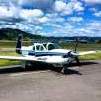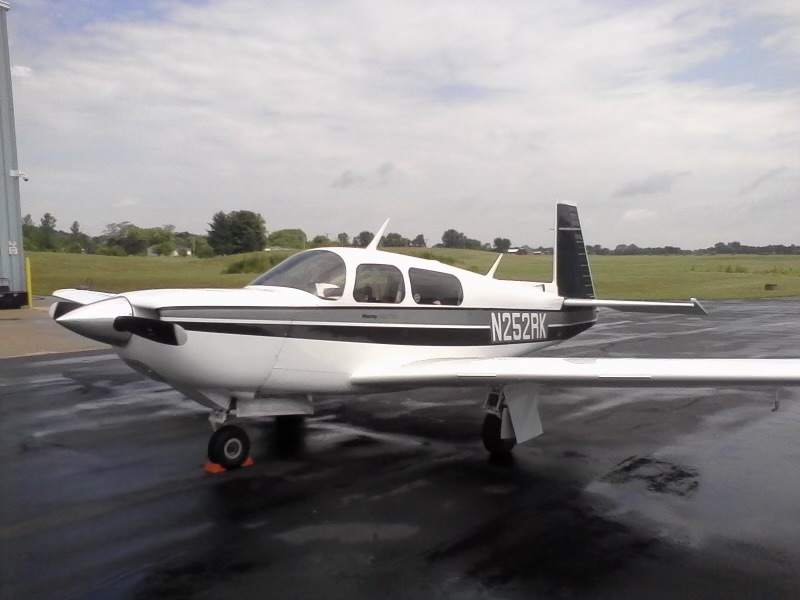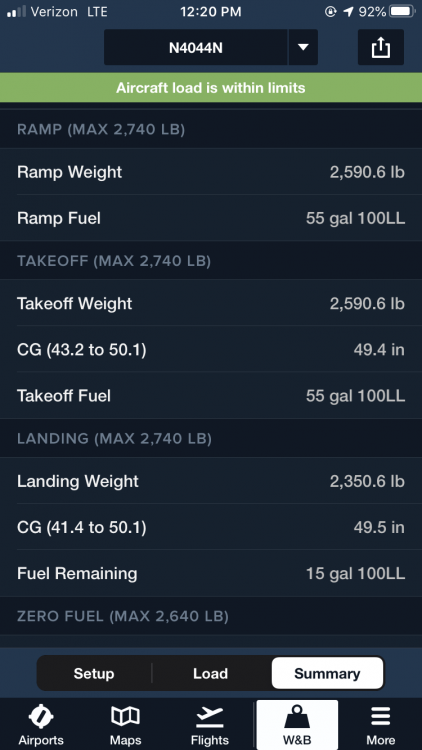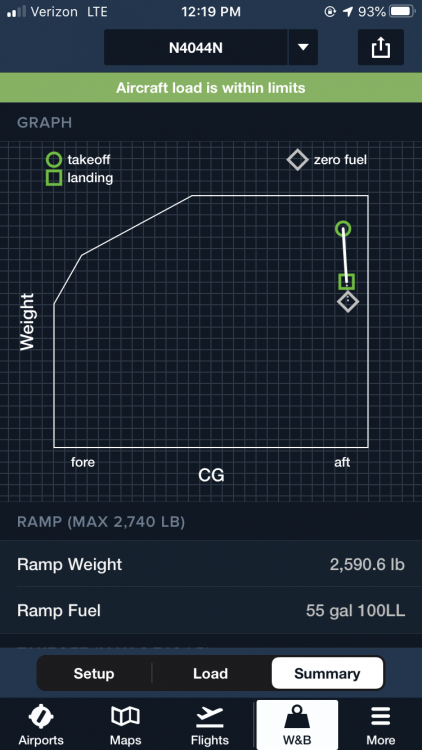-
Posts
5,515 -
Joined
-
Last visited
-
Days Won
27
Content Type
Profiles
Forums
Blogs
Gallery
Downloads
Media Demo
Events
Everything posted by Ragsf15e
-
No matter what, that’s definitely amazing. Good speed at 10,500’. Just be careful trusting the 50 year old pitot system to be accurate. The poh has a ~4 mph subtraction to get from IAS to CAS and that doesn’t even account for airspeed indicator errors. The best way is to do a good 3 way groundspeed run and enter it in an online calculator. If you do this a few times you’ll get a feeling for how close your IAS is, but it’s likely showing faster than actual. As I said though, impressive no matter what!
-
How much did it set you back?
-
Definitely. I fly a Turboprop for work and it’s fine all winter. Yeah there’s bad icing at times but the climb and descent is fast enough that you are out of it pretty quickly. The turboprop is fine here. Ive been contemplating finding an Eagle with tks for flying in Eastern Washington in the winter. Usually we just have a thousand feet or so of clouds with icing from 1000-2000’agl and then it’s nice on top. It would really increase your dispatch options. Crossing the cascades in an NA airplane in the winter is still gonna be dicey. The minimum ifr altitudes are pretty darn high and right where icing is common. Even with tks, you don’t wanna plan on cruising in icing. I actually had a hard time getting to Portland from Spokane in mid June. Cool weather had clouds over the mountains and into the Columbia gorge. Min ifr altitudes are 7-9k. Freezing level is 7k. Ugh.
- 42 replies
-
- buying mooney questions
- avionics upgrade
-
(and 1 more)
Tagged with:
-
The POH for my 68F says the fastest TAS is found at 2500’ MSL on a standard day. 2700rpm, 27.5” mp, 98% hp, 180mph. Not sure anyone is actually gonna run that and have their engine survive for long. Sea level and 5,000’ charts show slightly slower at 2700rpm and full power. For 75%, the same POH shows 171mph at 10,000’msl, 2600rpm, 73.6% power. That’s about the fastest one I’ve found at 75%power. If you have cool weather, it’s reasonably fast up high, but loses speed quickly as it warms up and density altitude increases. In my experience with realistic power settings, ~6,5000-7,500’ is your best bet.
-

Plane Power Alternator Acting up
Ragsf15e replied to Rspencer612's topic in Vintage Mooneys (pre-J models)
The PP voltage regs do have that adjustment, the Zeftronics VRs don’t have any adjustment. They sense the bus voltage and then automatically keep the alternator putting out appropriate output to maintain 13.8-14.2V ish. However, if you have old wiring and corroded connections, the resistance builds up and you’ll likely end up with a lower bus voltage. I think at times the PP adjustment is just masking the developing problem with our old wiring. -

Plane Power Alternator Acting up
Ragsf15e replied to Rspencer612's topic in Vintage Mooneys (pre-J models)
Well depends... if someone accuses me of taxiing to fast in a tailwind, I might mention the airspeed indicator showing zero! -

Plane Power Alternator Acting up
Ragsf15e replied to Rspencer612's topic in Vintage Mooneys (pre-J models)
Wait, you taxi slower than 20kts? IAS, TAS or groundspeed? -
On the bright side, if it does eat cylinders, they are probably cheaper than the angle valve lyc cylinders on IO-360s. Only thing worse is the io-390 cylinders, but then the newer sr-20s have those! Your conti cylinders are probably reasonably priced and that didn’t look good to the Cirrus crowd!
- 42 replies
-
- buying mooney questions
- avionics upgrade
-
(and 1 more)
Tagged with:
-
Does it eat cylinders like the SR-20 at our Flightschool?
- 42 replies
-
- buying mooney questions
- avionics upgrade
-
(and 1 more)
Tagged with:
-

Plane Power Alternator Acting up
Ragsf15e replied to Rspencer612's topic in Vintage Mooneys (pre-J models)
Oh, and beware the mechanic who wants to throw parts at this problem and doesn’t want to use a voltmeter! It can take a $50 dollar solution and cause a faulty $1000 “fix”! -

Plane Power Alternator Acting up
Ragsf15e replied to Rspencer612's topic in Vintage Mooneys (pre-J models)
There’s a bunch of us that have been through low voltage with the older airplanes. Most of it is old wiring and corroded connections. If you go through the troubleshooting guide from PP or Zeftronics, you can probably isolate the problem. I isolated mine to a worn circuit breaker feeding the voltage reg, worn master switch (field wire runs through the master), and to the field wire dropping some voltage. I’ve fixed 2 of theses things so far and it’s definitely helped. Replacing the field wire is definitely a good thing once in a while but it’s a pain because it runs From the VR back through the master switch and then to the alternator. -
Well sure, but I wrote it tongue in cheek... tough to sense the sarcasm in a written sentence though. So yeah, if you do it wrong, it’s hard to hot start an IO-360. If you do it right, it’s not.
- 42 replies
-
- 1
-

-
- buying mooney questions
- avionics upgrade
-
(and 1 more)
Tagged with:
-
Oh jeez, here we go with the hot start debate! For the record, I’ve almost burned up my starter only twice, and one of those times was when I first got it and didn’t know how to hot start it. Once you know, it’s real easy. Nothing wrong with the carb versions or the injected. I wanted the extra 20 horses, but they don’t make a huge difference.
- 42 replies
-
- buying mooney questions
- avionics upgrade
-
(and 1 more)
Tagged with:
-
Just so you go in with eyes wide open... I own an F based in Spokane. It’s great during summer in Washington, so june, july, August, sometimes September. It’s not gonna get you across the cascades or into Spokane more than once a month from December through March. Maybe a few times a month the “shoulder” months. I don’t mind flying IFR, but Icing is a significant factor up here and I find it hard to fly my airplane anywhere in the winter. On days I can fly, it’s difficult to forecast the next days icing, so returning home is an issue. Local flights are the norm.
- 42 replies
-
- buying mooney questions
- avionics upgrade
-
(and 1 more)
Tagged with:
-
Whatever works for you is awesome, I’m just glad when people are in the habit of doing a W&B and thinking about how that affects approach speeds. The takeoff distance is still important for us because we’re single engine. The airline guys figure theirs based on losing an engine and still either taking off or stopping as appropriate. For us, it’s more about figuring a takeoff distance and then using a personal pad to make sure it’ll work on our 50year old airframe. Losing an engine isn’t in the charts! personally, this is my 1 minute w&b solution.... foreflight. And yes, F models and most Mooney’s are awesome!
-
Well I’m not sure if it helps, but Lasar advertises the relocation STC as Improving air distribution... “Oil Cooler Relocation (M20E – M20F, 1967 & later with open baffle) No. 126 Speed Increase Parts Hardware & STC Labor Hours 1.0 mph $550 10+ Description Moves the oil cooler from the lower cowl to a position behind the #4 cylinder. Provides better air distribution for both the cylinders and the oil cooler, while streamlining the lower cowl. Fits 200hp models with open baffle system.” https://lasar.com/mods
-
I also wonder about how many of us or the other io-360a1as in the “cohort” have the oil cooler relocated behind the engine? Supposedly it cools better there because it gets more airflow and doesn’t get beat up by bugs and rocks. I’d love to hear from someone who did the relocation. STC is $550 from lasar. For the record, I do have chrome cylinders with plenty of blowby and a standard, front oil cooler. It works fine normally but I don’t usually fly in real warm weather.
-
I do agree, it was just different than i was use to. I gotta fly in warmer weather more often and get use to how it runs.
-
After telling you guys how great my oil temp is, I just flew 3.5 hours from Spokane , WA to Ogden, UT. Southwest flow aloft means headwinds and high temps. 9C at 11,500’. 12C at 9,500’. Both my oil temps and cylinder temps were hotter than normal. I have been cruising at 7,500 and up all winter with negative temps. I had to work to keep the oil below 200. Seemed like OAT was biggest factor, but keeping my clinders below 360ish helped too. I normally run 100 ROP that high but had to cool it a bit more. Also, I departed with 6 qts in. Probably 5.25 now. I’m gonna fill to 6.5 for the return. You guys are right, it wasn’t fun watching the oil temp slowly climb in level cruise.
-
I think some of these high oil temps might be related to the crazy airflow that happens inside our cowls. Obviously lower chts help, but if your vernatherm and oil cooler are good, then the other variable is how much air is coming through the oil cooler from the outside to the inside. Does anyone think it’s possible to get the baffling so good that there’s high pressure inside the cowl that prevents airflow through the cooler? What about the changed airflow due to that metal plate behind the cooler being installed or not? If the small metal baffles on the bottom of #2 cylinder aren’t exactly right and there’s no metal plate behind the oil cooler, could high pressure, warm air be going down through #2 fins and hitting the back of the oil cooler? I Probably have lower OATs than you guys up in Washington, but I get 190ish in climb and 180-185 cruise. Lasar cowl closure, but stock oil cooler.
-

High oil temp. Rpm loss. Rough ground run
Ragsf15e replied to Spuderman1's topic in Vintage Mooneys (pre-J models)
Ah yes, that’s worrisome. -

High oil temp. Rpm loss. Rough ground run
Ragsf15e replied to Spuderman1's topic in Vintage Mooneys (pre-J models)
Ha! I don’t know about your oil temp but my cht 1 looked just like that! Cold. Mine runs upper 200s while the other 3 cylinders are 330s. Had probes swapped, no change. Heck, even got an overhauled cylinder due to valve wobble and 1 is still cool. Weird. Makes me feel better that yours is the same. Is your oil pressure ok with that temp? Mine is noticeably less if the temp goes over 200. -
“Big iron” ADIs generally can’t be adjusted in flight. Obviously the Mooney isn’t big iron, but I think you’ll find it nice to have it level in cruise. On approach you’ll have it slightly nose down during descent which is where you’re going, so it makes sense. I think you’ll like it.
-
I’m sorry you’ve taken offense to your thread. MSers have lots of experience. In my opinion, nobody tried to put you down or say their airplane was faster/better than yours. We simply try to help people learn about their airplanes and flying in general. Confusion about IAS, CAS, TAS, and GS is common. In extreme conditions, this confusion or expectations of certain efficiency could lead to fuel exhaustion. My thoughts? Keep an open mind, try to take instruction and experience without getting offended. MSers will have your back!
-
Interesting on the G5. Mine is level in cruise. There’s a thread around here showing how to enter setup menu and adjust it if you want. Cruise is around 130IAS, vectors for approach is probably 110-120... probably still show you level. Very little change in AOA.





